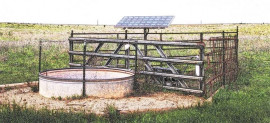
The first storey of the Diwane Aam, or Hall of Public Audience, at the Lahore Fort will open for public by the end of the year.
Archaeology Department deputy director Afzal Khan said the main veranda was already open for public. He said the first storey consisted of a white marble throne, four bedrooms and a balcony. “Restoration work is underway. We need to complete most of it before allowing visitors,” he said. Afzal said the rooms and balcony of Diwane Aam were closed for conservation in 2009.
He said the restoration work included retouching of frescoes in balcony domes, replacing plaster stuccos with marble and laying pipes to drain rain water off the Diwan roof. He said except for the drains all these will be complete by the end of the year. “Laying down drainage pipes will take another year,” he said.
Some of the stucco marble has been restored. Restoration of balcony’s eastern side will begin by autumn. “Fresh coats of plaster will be applied to replace those done during the British era,” he said. The restoration of frescoes in the balcony domes will be taken up in the end.
“The red bricks in the floor in front of the veranda will also be replaced with red sandstone to restore the structure designed by the Mughals,” he said. Afzal said sandstone was replaced with red bricks during Sikh and British rule.
He said white marble railings had been fitted between the 24 outer pillars of the veranda. Workers are still giving finishing touches to the carving on the railings, Afzal said. He said design was supervised by the conservation officer, Mukhtar Ahmed. Archaeologists believe that the original railings bounding the outer pillars of the veranda were removed between 1860 and 1920 by the British.
Forty 34-feet high pillars support the rectangular veranda of the Diwan.
These and the roof were built to cover the 187x60 square feet area during Shah Jehan’s era between 1640 and 1645 several decades after Diwane Aam was established during Akbar’s rule. The naulakha at the back of the pavilion was also constructed during Shah Jehan’s time.
The structure was used as a hospital during British rule. Rooms and balcony were reserved for the British and the pavilion for citizen’s use.
Published in The Express Tribune, July 26th, 2011.
COMMENTS (1)
Comments are moderated and generally will be posted if they are on-topic and not abusive.
For more information, please see our Comments FAQ





1735819169-0/Express-Tribune---News-Desk-(1)1735819169-0-270x192.webp)

















Thats good to know..